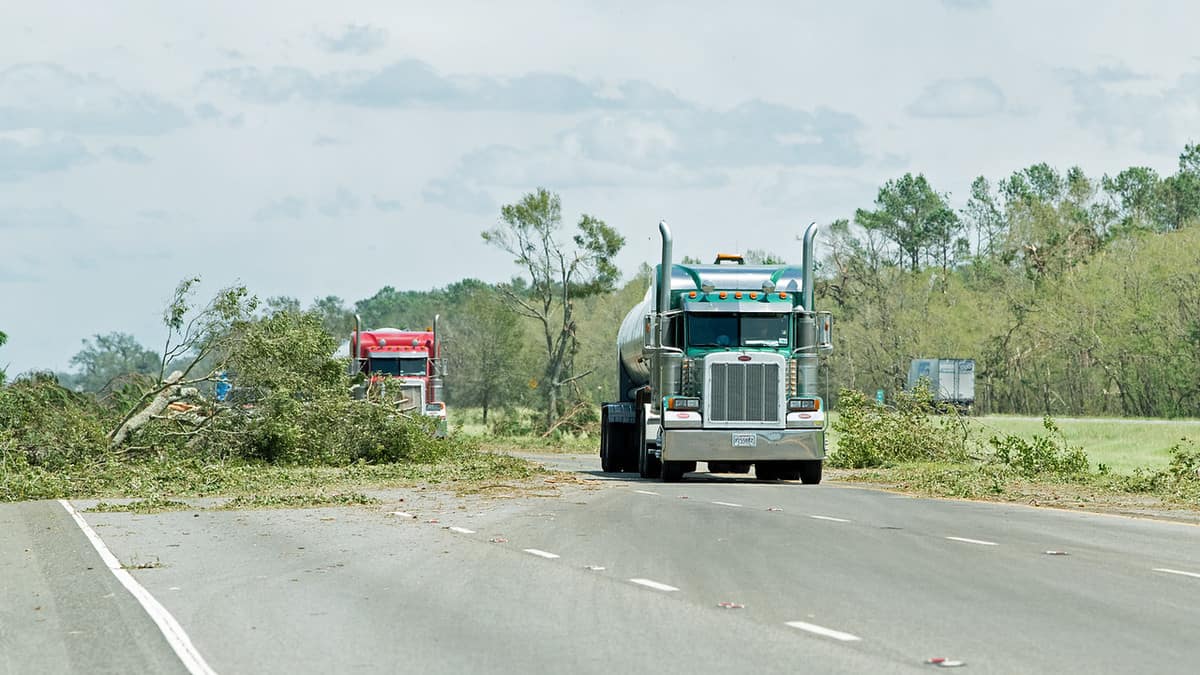The 2020 hurricane season is on pace to break the record of 28 named storms set in 2005, according to the National Oceanic and Atmospheric Administration (NOAA).
Challenges for the trucking industry during a hurricane are many, including the loss of contact with drivers due to cellular service outages or power shutdowns. This can risk the flow of goods, especially perishable items and pharmaceuticals that are sensitive to environmental conditions.
FreightWaves spoke with Chris Wolfe, the CEO of PowerFleet, to understand the impact of hurricanes and inclement weather on trucking fleets and how technology could bridge the gap.
“Typically fleets know in advance where the hurricane hits and have already rerouted their drivers or put them in rest areas or held them up until the hurricane passes. This is one of those things that you can plan for in logistics,” said Wolfe. “A lot of companies, like Walmart or Home Depot, preposition their trucks with additional cargo to get to their stores and facilities.”
Technology helps mitigate inventory management and hauling issues, helping preposition freight and choosing routes that would be passable during a hurricane. Technology also makes it easier to stay connected to trucks in the midst of a natural disaster or cellular service outage — especially when those trucks move critical and sensitive freight.
Most of the technologies in the market come with a “store and forward” type of system, which gives dispatchers near real-time communication with their drivers. Dispatchers of course want their technology to work without disruption, even in the event of a communication system failure.
For instance, forklift operators on docks would still be expected to work even when their communication systems are down. In such situations, creating a cache for security information like driver IDs can help. This way employees can still log on and the back office can continue to capture data, with nothing getting lost due to a communication outage.
To reduce the possibility of communication disruption, Wolfe suggested using Bluetooth low-energy (BLE) sensors, which enable low-data wireless communication and the efficient transfer of a small amount of data in real time, even in regions where cellphone connectivity is questionable.
PowerFleet used BLE sensors to great effect in its partnership with the French Red Cross, enabling the humanitarian organization to control, track and manage their assets while aiding health care efforts across Sub-Saharan Africa. BLE sensors log sensor data in real time and transmit it along with the shipment’s location to mobile applications and dashboards.
Wolfe said mesh networking also could help, especially in emergency situations. A mesh is a network of interconnected devices or nodes among laptops, cellphones, sensors and other wireless gadgets. Mesh networking ensures that even if one device within a network cannot transmit data through its primary communication path, it can still connect to a mobility platform on the chassis or the truck trailer, thus ensuring seamless data transmission.
“To us, the future of the industry is mesh networking, where you would be communicating out of your typical path through other avenues. With several friendly devices interconnected within the fleet, the mesh could be a good way to transmit and receive messages. With this capability, systems become a lot more robust, reliable and sustainable,” said Wolfe.
***
More from Vishnu Rajamanickam
Walmart pilots drones to fly items to consumers’ doorsteps
Uber Freight opens up platform for large enterprise shippers
KeepTruckin’s App Marketplace 2.0 gives carriers more control over data











